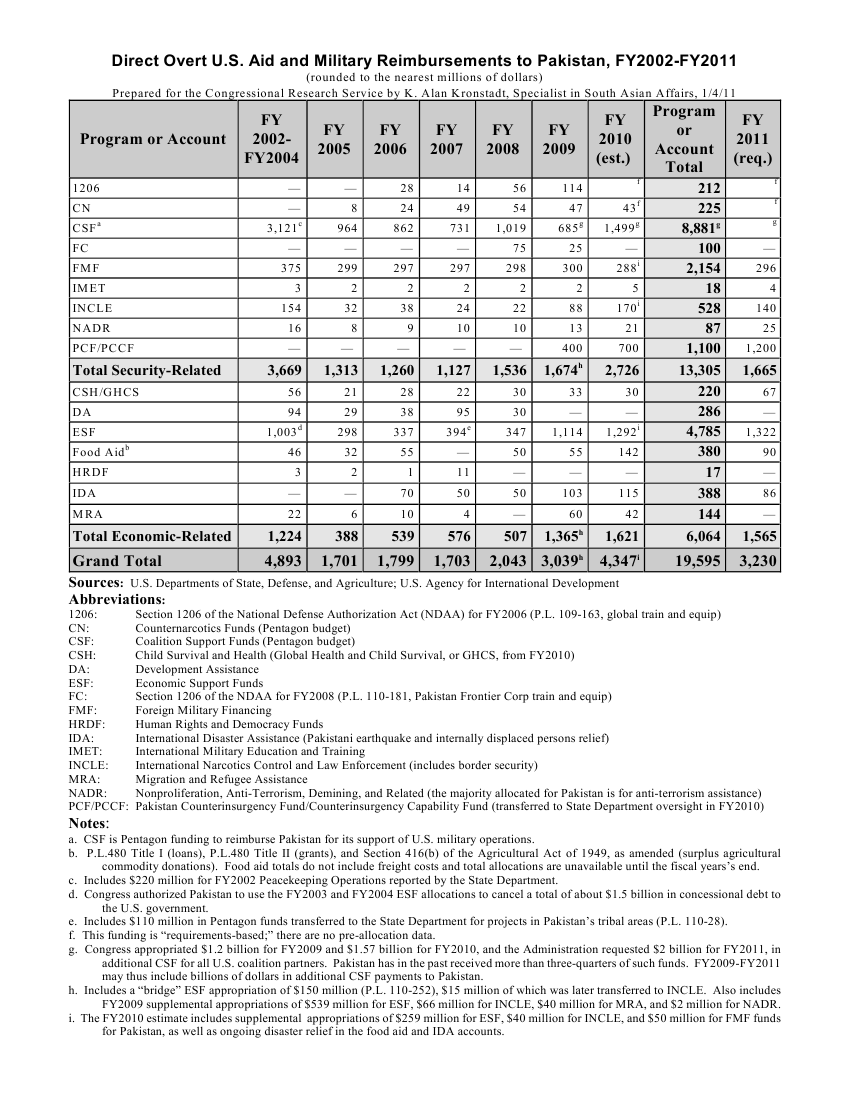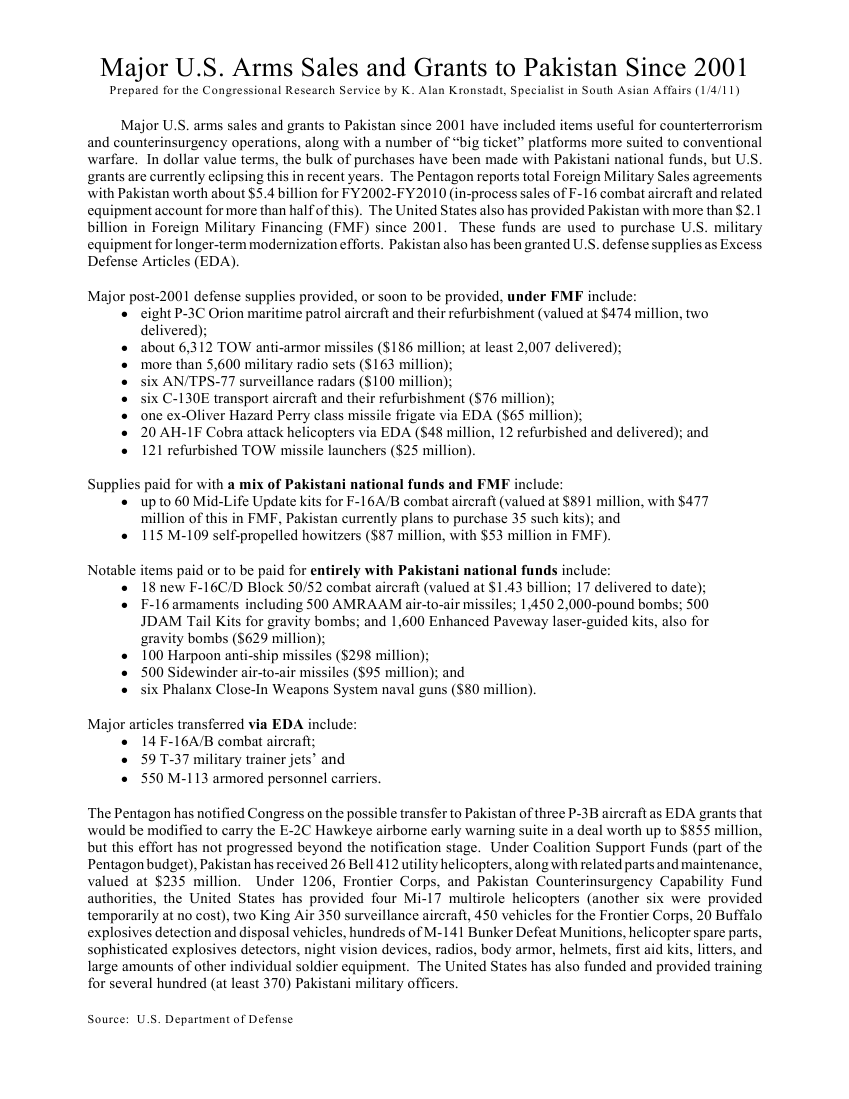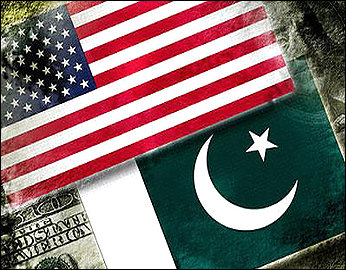
Much has been spoken and written about the United states aid program for the Pakistan military and the sales or grants of material to the military in Pakistan since 2001. But specifics about the nature of the flows and their changes over time have not been understood widely.
We are grateful for the following two tables that Alan Kronstadt of the Congressional Research Service has produced and that he updates regularly for giving us that birds-eye view of this relationship. While the flows have been notable in absolute terms for Pakistan, they do also show gaps in some areas where the need is truly greater. For example, training for Pakistani military has only risen to $5 million a year at a time when the gap between the US and Pakistan military in terms of mutual understanding is huge. Similarly, the arms sales and grants table shows only 20 attack helicopters in the past decade, when Pakistan’s need to fight the insurgency in the mountainous border terrain abutting Afghanistan calls for multiples of that number. The 26 Bell utility helicopters and the four Mi-17 multirole helicopters (plus the six temporarily provided at no cost) are a step in the right direction but does not give Pakistan the heft it needs to launch major operations in that border region.
The US Congress, Administration, and public may want to focus on these telling data and compare them with the expenditures in Afghanistan on a war whose center or gravity, according to many US analysts and decision makers, lies across the border in Pakistan. A better balance might produce a better result in building confidence and fighting the insurgency that threatens both countries.
Click on the images below to view them in higher resolution.
Major Arms Sales and Grants to Pakistan Since 2001 |
Direct Overt U.S. Aid and Military Reimbursements to Pakistan, FY2002-FY2011 |
 |
 |
Alan Kronstadt, Ph.D., is a Specialist in South Asian Affairs at Congressional Research Service in Washington, DC. Text introduction by Shuja Nawaz, Director, Atlantic Council South Asia Center. Photo credit: AP.
Image: pakistanusmoney.jpg
